1. Introduction
Cosmetic packaging plays a crucial role in the beauty industry. It’s not just about protecting the product—it’s about presenting a brand, creating an experience, and influencing consumer purchasing decisions. Whether it’s packaging for cosmetics, skincare packaging, or makeup packaging, the design and materials used play a crucial role in both product safety and marketing.
In today’s market, packaging must do more than just protect a product—it must also appeal to consumers. The packaging is often the first impression customers have of a brand, making it a powerful marketing tool. It communicates not only the function of the product but also the values the brand stands for, be it luxury, sustainability, or convenience. With growing concerns about the environment, many beauty brands are now turning to eco-friendly packaging solutions that reduce waste and carbon footprints.
The demand for recyclable cosmetic packaging, eco-friendly beauty packaging, and sustainable packaging solutions is on the rise, as consumers are increasingly looking for brands that align with their environmental values. As beauty brands seek to meet these expectations, the future of cosmetic packaging looks both exciting and eco-conscious.
In this article, we will explore the various types of cosmetic packaging materials, popular packaging formats, the importance of sustainability, and the latest packaging innovations. We will also highlight some iconic cosmetic packaging designs from major beauty brands that have left a lasting impact on the industry.
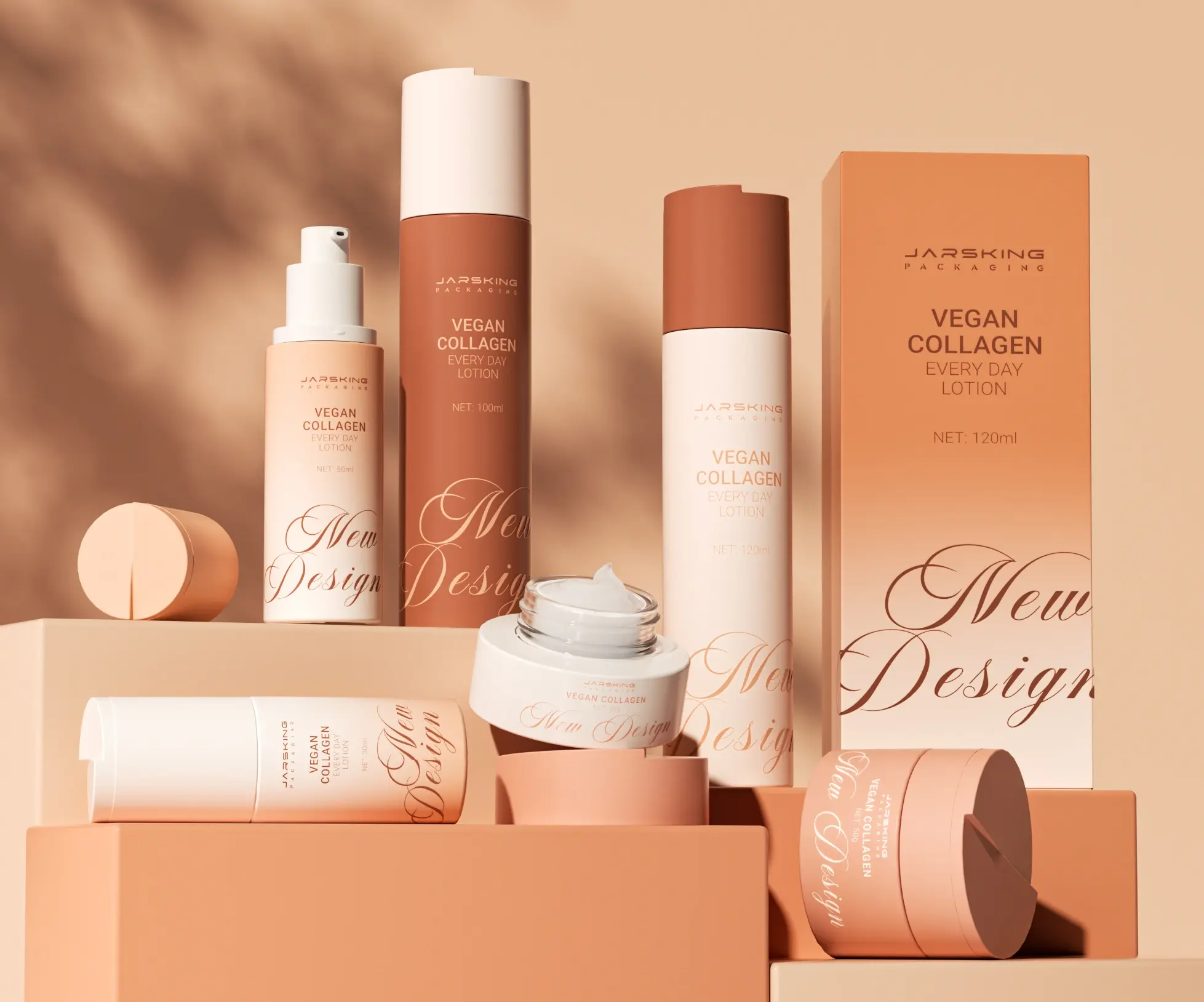
2. Types of Cosmetic Packaging Materials
Cosmetic packaging is available in a variety of materials, each chosen to meet the needs of different types of products and brands. The material selected for packaging not only affects the durability of the product but also plays a significant role in conveying the product’s image and the brand’s values. Let’s take a deeper look at the materials most commonly used in cosmetic packaging:
Glass Packaging
Glass is a classic choice for cosmetic packaging, particularly in the luxury beauty sector. It is commonly used for skincare packaging and perfume packaging, thanks to its premium appearance and durability.
Advantages of Glass Packaging:
- Non-reactive: Glass doesn’t interact with the product inside, ensuring that it doesn’t alter the product’s properties, making it an ideal choice for products like serums and luxury perfumes.
- Premium Look and Feel: Glass conveys a sense of sophistication and is often used for high-end beauty products packaging. The transparency of glass also allows consumers to see the product inside, which can enhance the visual appeal of the product.
- Sustainability: Glass is 100% recyclable and can be used again and again without losing its quality, making it an excellent choice for recyclable cosmetic packaging.
Challenges:
- Weight: Glass is heavier compared to plastic, which increases shipping costs and makes it less practical for travel-size products.
- Fragility: Glass can break easily, especially when it comes to cosmetic bottle packaging or perfume packaging containers during transit.
Despite these challenges, glass continues to be a preferred material for high-end cosmetic packaging due to its luxury appeal and sustainability.

Plastic Packaging
Plastic is the most commonly used material for cosmetic packaging due to its affordability, versatility, and durability. Plastic cosmetic bottles, cosmetic tube packaging, and personal care product packaging are made using various forms of plastic, each tailored to meet specific product needs.
Types of Plastic Packaging:
- PET (Polyethylene Terephthalate): A clear, strong, and chemically resistant plastic, PET is commonly used for cosmetic packaging containers like shampoo bottles and body wash containers.
- HDPE (High-Density Polyethylene): Known for its durability, HDPE is ideal for products that need to withstand impact, such as hair care packaging and personal care packaging.
- PP (Polypropylene): This plastic is commonly used in cosmetic tube packaging for lipstick packaging, foundation tubes, and cosmetic containers.
Advantages of Plastic Packaging:
- Lightweight: Plastic is significantly lighter than glass or metal, which helps reduce shipping costs. This is especially useful for products like skin care product packaging or cosmetic packaging for beauty products that are sold in larger quantities.
- Customizable: Plastic packaging types can be easily molded into different shapes and sizes, making it ideal for unique cosmetic packaging and distinct designs that cater to different beauty products. This makes plastic ideal for creative packaging ideas such as aesthetic makeup packaging.
- Cost-Effective: Plastic cosmetic packaging is cheaper to produce compared to glass or metal, making it the go-to material for mass-market beauty products packaging.
Challenges:
- Environmental Impact: While plastic is durable and versatile, it’s not biodegradable and contributes significantly to waste. As a result, many cosmetic packaging suppliers are turning to recyclable plastic containers and PCR plastics to reduce environmental impact.
Plastic continues to dominate the cosmetic packaging market due to its adaptability, cost-effectiveness, and variety of options.
Metal Packaging
Metal cosmetic packaging, such as aluminum cosmetic bottles and cosmetic jars, offers a sleek and durable alternative to plastic and glass. It is often used for luxury beauty products and eco-conscious brands.
Advantages of Metal Packaging:
- Durability: Metal is strong and resistant to damage, making it an excellent choice for lipstick packaging and cosmetic packaging jars that need to withstand travel and handling.
- Premium Appeal: Metal cosmetic packaging provides a high-end look, perfect for brands that want to convey luxury and elegance.
- Recyclability: Aluminum and tin are both highly recyclable materials, making them a more sustainable option compared to plastic.
Challenges:
- Weight: While lighter than glass, metal packaging can still be heavier than plastic, increasing transportation costs.
- Visible Marks: Metal packaging is prone to dents and scratches, which can affect the appearance of the packaging.

3. Popular Cosmetic Packaging Formats
Packaging formats are chosen based on the type of product being packaged. Different types of cosmetic packaging containers serve various functions and offer distinct advantages. Let’s explore the most common formats used in the beauty industry.
Tubes: Ideal for Creams and Lotions
Tubes are commonly used for products like lotions, creams, and gels. Cosmetic tube packaging offers several benefits for both brands and consumers.
Advantages:
- Airless Tubes: Many skincare brands now use airless tubes for skincare packaging to prevent air from contaminating the product, extending its shelf life.
- Portable and Convenient: Tubes are lightweight, easy to squeeze, and great for travel-size products. Plastic cosmetic containers like these are perfect for personal care products packaging.
Applications: Commonly used for face creams, hand lotions, and sunscreens.
Jars: Classic for Creams and Balms
Jars are a popular format for thicker products such as creams, balms, and masks. Many high-end skincare packaging products come in cosmetic jar packaging.
Advantages:
- Easy Access: Jars are perfect for thick products, allowing consumers to dip in and access the product easily.
- Larger Quantities: Jars often come in larger sizes, making them a great value option for skin care product packaging.
Challenges: Open jars can expose products to air, which can cause contamination or spoilage. Many brands use airtight lids to combat this issue.
Bottles with Pumps and Droppers
Pump bottles and droppers are often used for liquid products such as serums, oils, and foundations. These formats ensure precise and mess-free dispensing.
Advantages:
- Mess-Free Dispensing: Pump bottles allow for controlled dispensing, minimizing waste and ensuring the product lasts longer.
- Precise Control: Droppers offer accurate dispensing, perfect for high-end skincare packaging or serum packaging.
Applications: Used for serums, essential oils, and liquid foundations.
Rollers: Compact and Convenient
Rollerballs are ideal for portable products such as perfumes, oils, and deodorants. This format ensures controlled application and reduces product waste.
Advantages:
- Portable: Rollerball packaging is easy to carry, making it perfect for travel-size cosmetic packaging containers.
- Mess-Free: The roller design ensures a clean, controlled application.
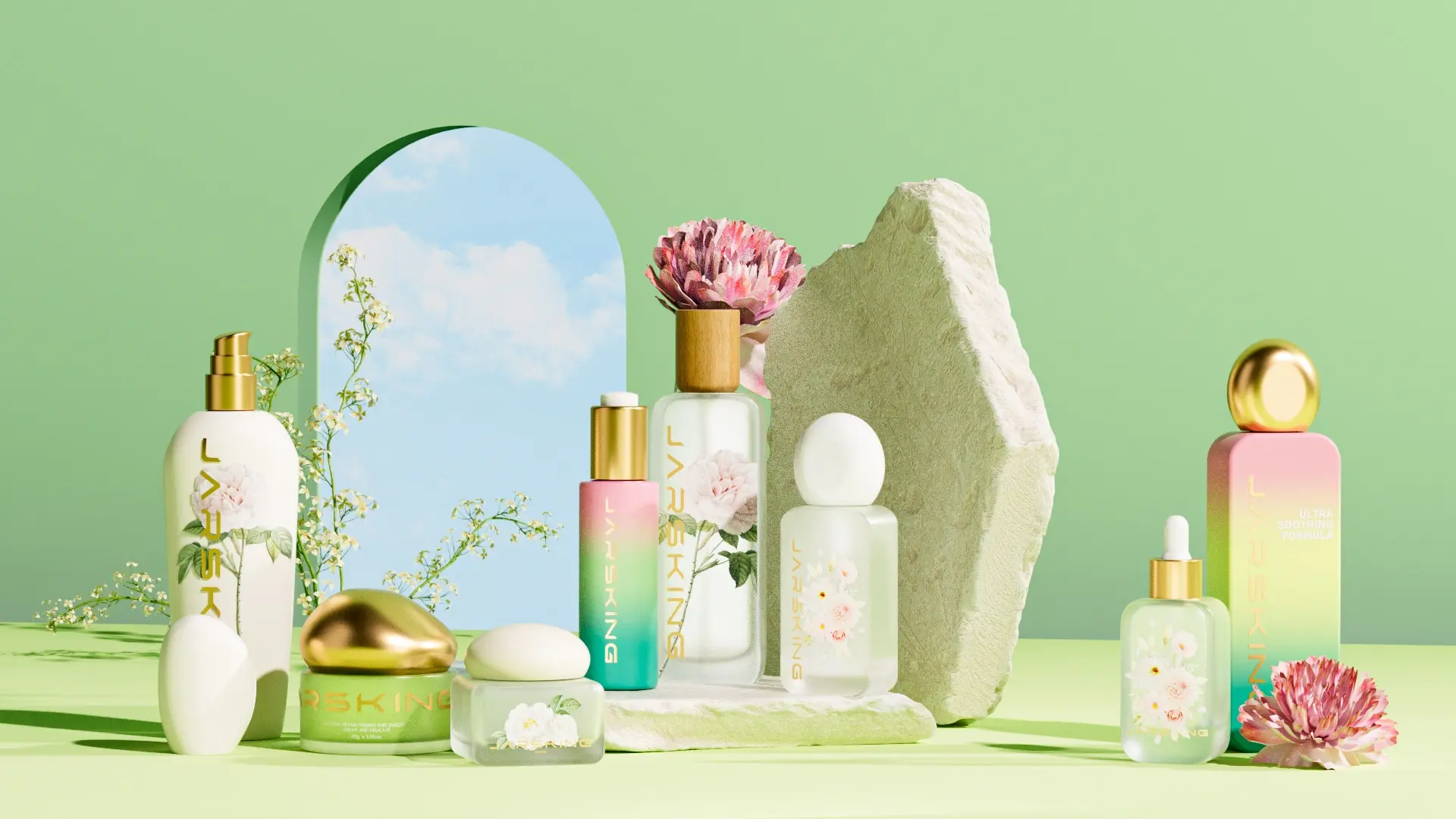
4. Sustainability in Cosmetic Packaging
The cosmetics industry is experiencing a profound transformation in packaging approaches, with sustainability emerging as the cornerstone of innovation in 2025. With the beauty industry producing approximately 120 billion units of packaging annually—most ending up in landfills—sustainable packaging has evolved from a market differentiator to an essential business imperative.
Current Market Landscape and Industry Commitments
Major beauty conglomerates have established ambitious sustainability targets that are actively reshaping the industry. L’Oréal Group’s North American division has implemented a comprehensive strategy focusing on using “no plastic, less plastic, or better plastic” wherever possible. Their approach prioritizes Post-Consumer Recycled (PCR) materials and “lightweighting” techniques to minimize environmental impact while maintaining product integrity.
Similarly, Credo Beauty achieved its 2021 sustainability goals by eliminating single-use products and prohibiting toxic ingredients like PFAS from packaging. Their 2024 goal requires any petroleum-based plastic packaging to contain at least 50% PCR content. The company also co-founded Pact Collective(a non-profit fostering industry-wide collaboration to combat the packaging problem at hand),, which now unites 150 industry members working collaboratively toward packaging circularity.
Leading Sustainable Packaging Innovations
Advanced Material Technologies
The material landscape for cosmetic packaging has evolved dramatically in 2025:
- Mono-material Collections: APC Packaging has pioneered the Mono-Material Color Cosmetics Collection, utilizing either 100% PET or PP materials across entire product ranges. This approach enables up to 50% PCR content integration (with some products capable of 100% PCR), simplifying recycling processes while maintaining aesthetic appeal.
- Bioplastics Evolution: Advanced biopolymers derived from renewable resources like cornstarch and sugarcane have achieved premium quality and feel comparable to traditional plastics while offering superior environmental performance. These materials decompose naturally without releasing microplastics or toxic residues.
- Innovative Alternatives: Manufacturers are offering sophisticated substitutes for conventional plastics, including US-made stainless steel, POM-ECO B (a plant-based resin), and honeycomb wrapping solutions that prioritize functionality without compromising sustainability.
Refillable Systems and Circular Design
Refillable packaging has emerged as one of the most significant trends in 2025, with both luxury and mass-market brands adopting sophisticated refill systems:
- Closed-loop Systems: Brands like Izzy have pioneered packaging that is 100% reusable and recyclable, designed specifically for refilling rather than disposal. This approach maintains product quality while dramatically reducing waste.
- In-store Refill Stations: Major retailers have expanded their refill infrastructure, allowing consumers to replenish products without purchasing new packaging, creating a truly circular consumption model.
- Component Standardization: Industry leaders are working toward standardized packaging components that facilitate easier refilling across brands and product categories, enhancing consumer adoption of refillable systems.

Strategic Implementation Approaches
Minimalist Design Philosophy
The minimalist packaging movement has evolved beyond aesthetics to become a fundamental sustainability strategy in 2025:
- Material Reduction: Clean lines, subtle colors, and basic shapes aren’t merely design choices—they represent significant reductions in material usage and waste generation.
- Monochrome Palettes: Sophisticated color schemes that convey luxury while minimizing the environmental impact of dyes and pigments have become industry standard.
- Structural Efficiency: Advanced engineering approaches have enabled packaging that uses fewer materials while maintaining or improving product protection and user experience.
Digital Integration and Smart Packaging
Technology integration has enhanced sustainability efforts through:
- Digital Product Information: QR codes and NFC technology have replaced printed inserts, significantly reducing paper waste while providing more comprehensive product information.
- Lifecycle Tracking: Advanced tracking systems enable brands and consumers to monitor packaging throughout its lifecycle, facilitating proper recycling or return for refilling.
- Consumer Engagement: Digital interfaces provide sustainability metrics and incentives, encouraging consumers to participate in circular packaging programs.
Industry Challenges and Solutions
Despite significant progress, the industry faces several challenges in fully implementing sustainable packaging:
Material Performance and Compatibility
Sustainable materials must still provide adequate protection for cosmetic formulations, which often have specific stability requirements. Industry leaders are addressing this through:
- Advanced Barrier Technologies: Developments in plant-based barrier materials that provide equivalent protection to conventional plastics without compromising recyclability.
- Formulation Adaptation: Reformulating products to be compatible with sustainable packaging materials, such as waterless or solid formulations that require less protective packaging.
Economic Considerations
Cost remains a significant factor in sustainable packaging adoption:
- Scale Economies: As production volumes increase, the cost differential between conventional and sustainable packaging options is narrowing.
- Value Chain Integration: Vertical integration strategies are helping brands control costs while maintaining sustainability commitments.
- Consumer Education: Brands are effectively communicating the value proposition of sustainable packaging to justify potential premium pricing.
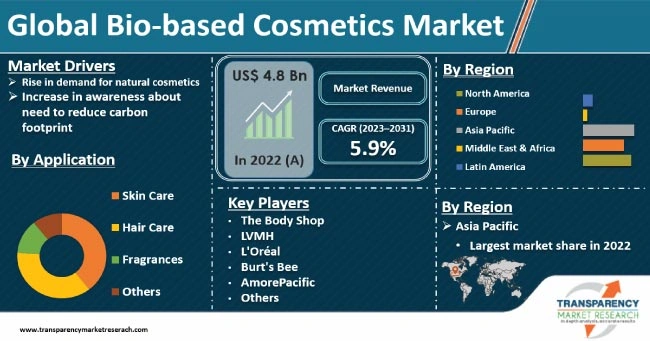
Future Outlook and Emerging Trends
Looking ahead, several emerging trends will likely shape the sustainable packaging landscape:
AI-Driven Design and Material Selection
Artificial intelligence is revolutionizing sustainable packaging development by analyzing vast datasets on materials, costs, availability, consumer preferences, and regulatory requirements. This approach enables tailor-made sustainable packaging solutions that are both cost-effective and compliant.
Advanced Recycling Technologies
Innovations in recycling technology are expanding the range of materials that can be effectively recycled, contributing to a more circular economy. Arcade Beauty has committed to eliminating non-recyclable designs by 2030, with 100% of their products having recyclable, water-soluble, or compostable alternatives by the end of 2025.
Industry Collaboration
Cross-industry collaboration has become essential for addressing systemic packaging challenges. Initiatives like Pact, which now includes 150 industry members, demonstrate the power of collective action in driving meaningful change.
The sustainable cosmetic packaging landscape in 2025 represents a sophisticated balance of environmental responsibility, consumer expectations, and business imperatives. As the industry continues to innovate, we can expect even more advanced solutions that further reduce environmental impact while enhancing the consumer experience.
5. Customization and Branding in Cosmetic Packaging: Creating Distinctive Brand Experiences in 2025
In today’s competitive beauty landscape, packaging design has evolved far beyond its functional purpose to become one of the most powerful brand communication tools. With approximately 73% of purchasing decisions made at the point of sale, cosmetic packaging serves as a critical touchpoint that can significantly influence consumer behavior. As we move through 2025, brands are leveraging customization and distinctive design elements to create emotional connections with consumers and differentiate themselves in an increasingly crowded marketplace.
The Psychology of Packaging in Brand Identity
Packaging design plays a crucial role in establishing and reinforcing brand identity in the cosmetics sector. It serves as the primary vehicle for expressing a brand’s personality when products are displayed on retail shelves or featured in social media content.
Creating Emotional Connections Through Design
Effective packaging design creates an immediate emotional response that transforms a simple purchase into a meaningful brand experience. This emotional connection is particularly important in the beauty industry, where products are often tied to self-expression and personal identity.
For luxury brands like Chanel, packaging creates a sense of indulgence and exclusivity. The weight of the packaging, the finish of the material, and the precision of the design collectively deliver an experience that feels special and premium. Even minute details—such as the satisfying click when a lipstick cap closes—can elevate the perceived value of a product and strengthen brand loyalty.
The Power of Visual Consistency
Consistency in packaging design is fundamental to building strong brand recognition. When consumers can quickly identify products as belonging to a specific brand through consistent typography, color schemes, and imagery, it fosters brand loyalty in a market saturated with options.
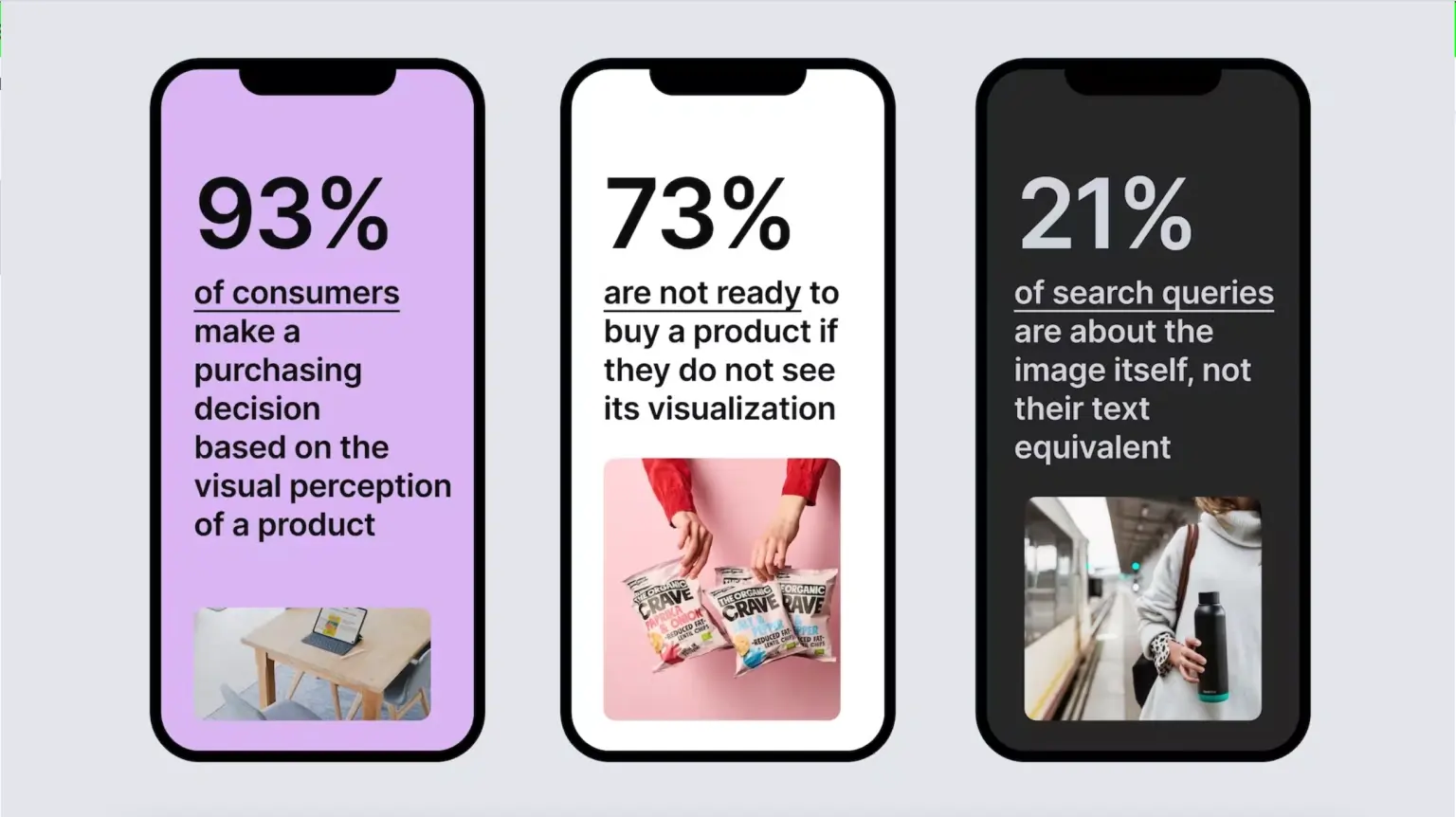
Contrasting Approaches: Luxury vs. Minimalist Branding
The beauty industry showcases diverse approaches to packaging design, with brands like Chanel and Glossier representing opposite ends of the spectrum while achieving equally strong brand identities.
Chanel: The Epitome of Timeless Elegance
Chanel’s packaging design embodies the brand’s commitment to classic sophistication through minimal black and white aesthetics. The brand’s iconic No. 5 perfume bottle, with its simple rectangular shape and gold accents, has become a symbol of luxury and timeless beauty.
The brand’s packaging palette rarely strays from black, white, gold, beige, silver, and pink—a deliberate choice that reflects a preference for simplicity over heavy decoration. Despite this apparent simplicity, creating such refined packaging requires meticulous attention to detail, as small imperfections become more noticeable in minimalist designs.
Glossier: Modern Minimalism for the Digital Age
In stark contrast to Chanel’s legacy of luxury, Glossier has built its brand identity around a modern minimalist aesthetic that resonates with younger, millennial consumers who appreciate simplicity and authenticity. Launched in the digital era, Glossier’s packaging design strategy acknowledges the importance of creating products that are not just effective but also visually appealing for social media sharing.
From Glossier’s inception in 2014, founder Emily Weiss was intent on crafting products designed to be photographed and shared. The idea was to create packaging so delightful that customers would “take it out and take a picture of it, like you would food,” she said. This approach has proven highly successful, with Glossier’s signature pastel pink becoming a cultural phenomenon that resonates with younger consumers who value understated elegance and Instagram-worthy aesthetics.
Glossier’s packaging features:
- Light shades of cream and pink complemented by pastel colors
- Plain white tubes and containers with strategic splashes of color
- Minimal text, featuring only essential product information
- Clean fonts and simple designs that convey sophistication
This approach has allowed Glossier to differentiate itself in the market while appealing to consumers who prefer a clutter-free design aesthetic.
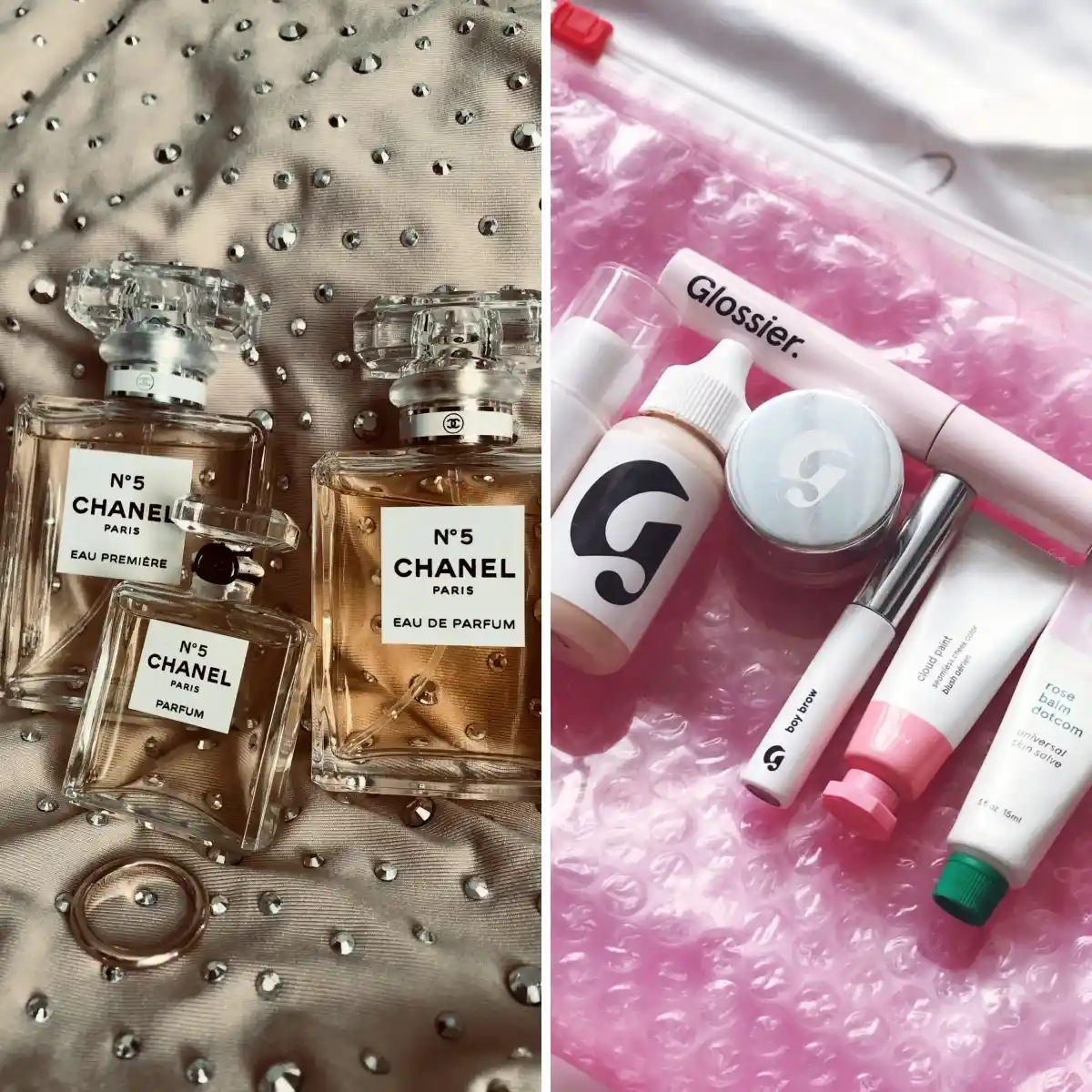
Strategic Elements of Effective Cosmetic Packaging Design in 2025
As of April 2025, several key elements have emerged as essential considerations for effective cosmetic packaging design:
Functionality and Protection
Effective packaging must balance aesthetic appeal with practical functionality. The packaging should be user-friendly with easy-open lids and secure closures while providing adequate protection from damage, contamination, and environmental factors such as light, heat, and moisture. This protection is essential for maintaining product integrity and extending shelf life.
Glossier demonstrated this balance when they updated their Balm Dotcom in 2023, swapping the old squeeze tube for a new slanted, hands-free applicator. The functional upgrade was well received for being cleaner, easier, and more user-friendly, even as some consumers expressed concerns about the reformulated product inside.
Visual Elements and Typography
Typography plays a crucial role in conveying information about both the product and the brand. Choosing fonts that align with the brand’s values and target audience is essential. For example, Glossier uses clean, simplistic typography that effectively communicates key messages to customers in an uncomplicated way.
Color Psychology and Brand Alignment
Color selection is a critical aspect of packaging design, with different colors evoking specific emotional responses and associations. Brands must select colors that complement their values and target market. Glossier’s signature pastel pink hue paired with clean typography reflects its simplicity-driven branding strategy.
Material Selection and Tactile Experience
The physical properties of packaging materials significantly impact consumer perception. Luxury brands often use heavier, more substantial materials to convey quality and exclusivity, while brands focusing on sustainability might opt for lighter, eco-friendly alternatives.
Current Trends in Cosmetic Packaging Customization for 2025
Minimalist and Transparent Design Aesthetic
Consumers in 2025 crave authenticity and transparency—not just from ingredients but also from packaging design. Minimalist packaging with clean fonts, neutral colors, and glass or frosted containers are dominating shelves and social media feeds.
Key trends include:
- Frosted glass bottles
- Monochromatic packaging
- Bold but clean typography
Smart and Interactive Packaging
Technology meets beauty in 2025. More brands are adopting smart packaging that includes QR codes, NFC chips, and augmented reality (AR) experiences. A simple scan can now give consumers detailed product information, tutorials, or brand stories—right from the packaging.
This not only enhances customer engagement but also helps beauty brands stand out in an increasingly competitive market. According to Packaging Digest, AR-integrated packaging can increase consumer interaction by up to 80%.
Textural and Sensory Packaging Elements
Tactile experiences are becoming a core part of brand storytelling. Think velvet-textured compacts, embossed logos, and magnetic closures. These elements add a sense of luxury and enhance the unboxing experience—especially important for influencer reviews and customer-generated content.
Trending features include:
- Soft-touch coatings
- Embossed patterns
- Magnetic lids or click-closure mechanisms
Limited Edition and Seasonal Packaging
Limited edition packaging has become a powerful strategy for creating urgency and exclusivity. Brands like Shiseido have successfully implemented festive beauty packaging for holiday collections, featuring pixelated presents and ornaments against their familiar red backdrop.
This approach not only creates a novel impression on consumers but also offers a way for brands to refresh their image seasonally without completely overhauling their core packaging design.

The Impact of Social Media on Packaging Design
The influence of digital platforms and social media has played a significant role in shaping cosmetic packaging design trends. With beauty influencers and social media content driving purchasing behavior, packaging that is visually appealing and “Instagrammable” is more likely to attract consumer attention.
The rise of online beauty tutorials and unboxing videos has underscored the importance of packaging in creating a memorable consumer experience. Additionally, the growth of e-commerce has led brands to focus on packaging that is durable enough to handle shipping while still being attractive, ensuring products reach consumers in pristine condition.
6. The Development Direction of Packaging Innovation
As we progress through 2025, several emerging trends are shaping the future of customization in cosmetic packaging:
Personalization at Scale
Personalization and customization have emerged as strong growth factors. Consumers are increasingly seeking products that reflect their personal tastes and preferences, and packaging plays a vital role in providing that sense of individuality. Brands are offering customizable packaging options, allowing consumers to choose colors, designs, and even engraved messages, making products feel more personal and unique.
Sustainable Customization
Sustainability has become a key consideration in packaging design. Brands are finding innovative ways to offer customized packaging experiences while minimizing environmental impact. This includes the use of mono-material packaging—using a single type of material (like PET or PP) that’s easier to recycle.
Digital Integration
Digital elements are increasingly being incorporated into packaging designs. QR codes and NFC technology are replacing printed inserts, reducing paper waste while providing more comprehensive product information. These technologies also enable brands to offer personalized content and experiences based on consumer preferences and behavior.
The evolution of cosmetic packaging design reflects the industry’s understanding that packaging is not merely a container but a powerful medium for brand storytelling. In today’s competitive beauty landscape, brands that successfully leverage packaging design to create distinctive, memorable experiences will continue to build stronger emotional connections with consumers and drive long-term brand loyalty.
7. Conclusion
Cosmetic packaging has evolved beyond mere functionality to become a powerful brand communication tool that creates emotional connections with consumers. Brands like Chanel exemplify timeless luxury through minimalist black, white, and gold designs, while Glossier appeals to younger demographics with Instagram-friendly pastel aesthetics. Effective packaging design balances visual appeal with practical considerations including material selection, typography, color psychology, and user experience, all while reflecting core brand values that resonate with target audiences.
As the industry progresses through 2025, packaging innovation continues along three key trajectories: sustainability, customization, and technological integration. Sustainable solutions including refillable systems, recyclable materials, and minimalist designs have become industry standards rather than differentiators. Meanwhile, brands are leveraging limited editions, personalization options, and smart packaging features like QR codes and AR experiences to enhance consumer engagement. The future of cosmetic packaging will require brands to balance aesthetic appeal, functionality, sustainability, and technological advancement while maintaining distinctive brand identities in an increasingly competitive marketplace.


